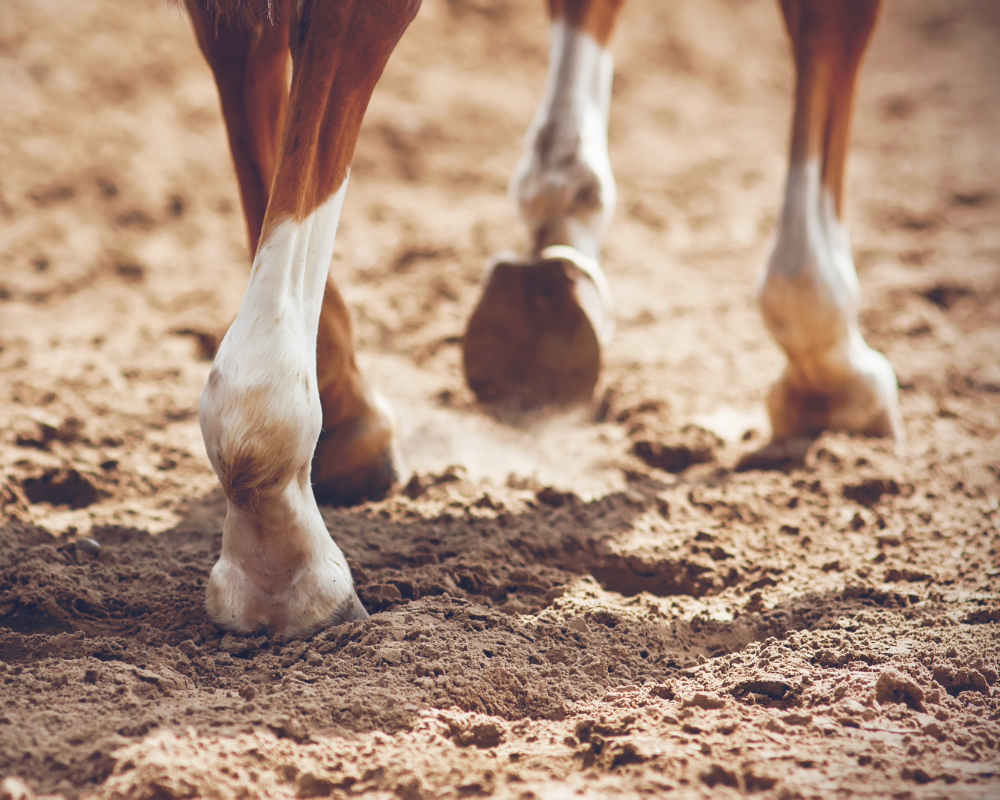
Shoeing a horse isn’t always a given. Some horses do just fine barefoot, while others need shoes to stay sound and comfortable. So how do you know what your horse needs? Let’s break it down.
Why Some Horses Need Shoes
Horseshoes serve a few different purposes, but the main reasons for shoeing are:
- Protection: Some horses have thin soles or tender feet that can’t handle hard or rocky ground.
- Traction: Shoes can help horses maintain better footing, especially in work that involves speed, turns, or uneven terrain.
- Support and Correction: Horses with conformational issues, uneven wear, or specific lameness conditions may benefit from therapeutic or corrective shoeing.
When Your Horse Might Go Barefoot
Not every horse needs shoes. In fact, going barefoot can be a healthy and cost-effective option if your horse meets certain criteria:
- Strong, Healthy Hooves: Horses with good hoof quality often do well without shoes.
- Light Workload: Horses in light or moderate work, especially on soft footing, may not need extra protection.
- Proper Trimming: A skilled farrier can keep a barefoot horse balanced and comfortable through regular trimming.
Your farrier and veterinarian can help you decide whether your horse’s conformation, hoof health, and lifestyle make them a good candidate for going barefoot.

Clues Your Horse Might Need Shoes
Even if your horse has been barefoot, there are signs that shoes might be beneficial:
- Tenderness after trimming
- Chipping or cracking hooves
- Reluctance to move on rough ground
- Changes in performance or behavior under saddle
If you’re noticing any of these issues, it’s a good idea to talk to your farrier or veterinarian.
Arizona Conditions and Hoof Health
Here in the Arizona desert, horses face unique hoof challenges. The dry climate can cause hooves to become brittle or develop deep cracks if they’re not properly cared for. Regular maintenance and hydration—through hoof treatments or proper diet—can help support hoof health whether your horse is shod or barefoot.
Hard, rocky terrain can also wear hooves unevenly or cause soreness, especially in horses with thinner soles. In those cases, shoes (or even hoof boots) may offer relief and protection during rides or turnout.
Working With Your Farrier
Shoeing decisions should always be made in collaboration with your farrier. They’ll assess your horse’s needs based on conformation, workload, hoof condition, and movement. In some cases, shoes might be a temporary solution to correct a problem or ease a transition—while other horses may need long-term support.
The goal is always the same: keeping your horse comfortable, sound, and ready for whatever job they have to do.

Need guidance on your horse’s hoof care?
Cave Creek Equine is here to help! Contact us today to schedule an appointment and ensure your horse’s hooves are in top shape.
623-581-5508








